The Girl Who Was Born That Way is the story of the Berk family, not exactly an ordinary Jewish family, trying to bury its Holocaust past while starting over in post-war USA. The novel centers on the dynamics between the family’s four daughters, the two oldest girls who grew up in the Lodz Ghetto and he two youngest who came of age in an idyllic American suburb. The story is told from the perspective of the youngest child in the family, whose sisterly love and compassion drive the novel’s action. Can her curiosity bring the family’s dark Holocaust history into the open? Can she save her anorexic third sister whose short stature and physical anomalies are a source of family embarrassment and shame? The Girl Who Was Born That Way considers the life of immigrants living in the diaspora, the miracle of their survival and their helplessness when faced with the disabling condition of their third daughter.
“Gail Benick’s clean prose brings one family’s love and secrets into focus, letting us feel the longing for connection across the chasm of the unsayable. While the Berk family’s life is steeped in Jewish culture — and the memory of the Holocaust — this finely-crafted novella encompasses universal themes. Familial love and loss transcend all boundaries of history and culture; Benick has brought these themes home through her beautiful portrayal of Linda Sue and her siblings.”
— Marianne Apostolides, author of The Lucky Child and Voluptuous Pleasure: The Truth About the Writing Life
“Survivors of the Lodz ghetto, the Berkowitz family is renamed Berk, “with the flick of an immigration officer’s pen.” But assimilation to North American culture is nowhere near that simple, especially for one daughter born with Turner’s Syndrome, a condition which renders her visibly different from her peers. Commonplaces of 1950s girlhood become the vehicle for this meditation on identity and difference. In the voice of her young protagonist, Gail Benick maintains an exquisite tension between poignancy and wit, depicting a life where each day brings collisions between outer confidence and inner trauma, between boundless opportunity and irretrievable loss.”
—Maria Meindl, author of Outside the Box: The Life and Legacy of Writer Mona Gould, the Grandmother I Thought I Knew
“The Girl Who Was Born That Way has a rare genetic condition, Turner Syndrome, which only affects females. As someone with Turner Syndrome who was born in the fifties and spent part of my adolescence in the sixties, this novella makes me appreciate the great strides made since Terry Sue’s days. In this book, Gail Benick approaches both the social and medical issues of this syndrome in a delicate, insightful and sympathetic manner. A compelling must-read for everyone.”
—Susan Charney, founder of The Turner Syndrome Society of Canada
“At the heart of Gail Benick’s The Girl Who was Born that Way is a double ring of four sisters. On the outer rim, move the eldest two, Hetty and Tilya, child survivors of the Lodz Ghetto eager to reinvent themselves in their adopted country; in the inner circle, we greet the younger American-born sisters, the novella’s narrator, Linda Sue, and her older sibling, Terry Sue, who was born with Turner’s Syndrome. I looked forward to the spirited letters Terry Sue writes at the end of each chapter, letters which lend an epistolary mode to the novella.
In spite of her genetic mutation and the physical and mental afflictions she suffers (she becomes anorexic and is hospitalized) Terry Sue’s voice remains inquisitive, youthful, and loving. In turn, Linda is protective and considerate of her sister, at one point buying foam rubber to make falsies for Terry Sue, who does not develop normally. Highly attuned, Linda decodes her child and adolescent world, making sense of her family and of a broken past that imposes without warning like a sinister wind funneling its way into the home. Often that wind is chased away by her father’s sense of adventure and her older sisters’ desire to regain normalcy, to keep their Jewish identity under the radar, and to integrate with dignity into St. Louis society circa the 1950’s-60’s. Danger lurks, though, real or otherwise. Linda Sue has internalized some of her mother’s palpable fear. At one point, Linda Sue watches an antique fan turning overhead and conjures up decapitation, imagining her mother’s suicide should such a catastrophe befall her. Of course, her family did survive a cataclysm before she was born. In a segment that reminded me of Anne Frank’s rules for the Annex, Hetty relays to her younger sisters the Berkowitz Guide to Surviving in the Lodz Ghetto. Her memories here, with credit to Benick, are transplanted onto the page authentically, sparely, through the eyes of a child. (How the family survived the liquidation of the Lodz Ghetto and deportation to Auschwitz in the summer of 1944 is not dealt with in the back story.) Along with the sadness, the “shadow of grief” her mother conveys, the narrative moves at a buoyant pace as navigated by Linda Sue, highlighted by flashes of family outings, pubescent dances with boys, and by her interaction with colorful neighborhood characters whose voices add texture to the novella and perspective to Linda Sue’s world view.
All this before the novella takes its tragic turn in the untimely death of Terry Sue. At the end of the novella, it is Tilya, renamed Toni, who writes a dissertation in honor of her sister’s misunderstood disease and death. In this instance, unlike so many of Linda Sue’s questions left unanswered in the novella, Toni’s inquiry is a gift of scholarship and commemoration, one that is both fruitful and life-affirming.”
— Carol Lipszyc, author of The Saviour Shoes and Other Stories and Singing Me Home
“Ultimately, in the 117 pages of The Girl Who Was Born That Way, Benick has compactly shown the complexities of migrating to a foreign land with few belongings and resources and many differences. She tells the story honestly, sensitively and with lots of heart.”
— The Canadian Jewish News
“That’s where we lived when we first arrived in St. Louis,” Hetty said when we came to Eastgate Avenue. “In a one bedroom apartment over there.” The three-storey building they had lived in was located just a half a block from Delmar. On both sides of the street, apartments were crammed together, the brick wall of one building nearly touching the building next to it. Heaps of dirt and weeds covered the front yards.
“Does the Loop look like Lodz?” I turned to Hetty and then to Tilya, wishing that for once they would say something about where our family lived before coming to the United States. Terry Sue and I had often asked them, but had gotten nowhere. Neither one answered.
A little further down Delmar on Leland, we bumped into Ellen Brownstein. I knew for a fact that Terry Sue would have traded anything, even that mangled unicorn of hers, to be invited to Ellen Brownstein’s house for a swim.
“Where’s Terry Sue tonight?” she asked us. Her arms and legs were a bronze colour, more orange than tan, which clashed with the red nail polish on her fingers and toes. Freckles dotted her nose. “Your sister is just so adorable. Why isn’t she with you?”
I despised Ellen Brownstein for the way she treated Terry Sue. She had some nerve to tell us that Terry Sue was adorable when she never called her, never went bike riding with her, never included her in pool parties, never wanted her as a friend.
A few weeks back, I had decided that Terry Sue and I would drop by Ellen Brownstein’s house in the well-to-do section of University City. Maybe our visit would get something started between Terry Sue and her. Mama and Papa were at their weekly Canasta game that night. At seven o’clock, it was still light outdoors and the thermometer on the living room wall read ninety-three degrees.
“Let’s get out of here,” I had said. “Don’t you want to go find Ellen?” We laced up our sneakers, wheeled our Schwinns from the garage, and cycled up to Gannon and then as far west as Swarthmore. Terry Sue shouted ahead to me, “Are we going to be at Ellen’s soon? I can’t wait to surprise her.” When we approached Mulberry Lane, a whiff of chlorine hit us. We left our bikes on the ground and scrambled through the underbrush. I twisted through the barbed wire fence bordering the Brownstein’s backyard, Terry Sue following, so excited to see a swimming pool that she had heard was the shape of a kidney, and to say hi to Ellen.
“Where’s Ellen?” she said as we got closer to the chlorine smell. “I thought you said we were going to find Ellen.” “We will,” I said. Warm liquid dripped down my arm. I looked over at Terry Sue. Her shoulder had a hole bulging with blood from the barbed wire fence just like mine.
We crawled close enough to spy on Ellen and two other girls lounging on the patio. We could hear the ice cubes clinking in their frosted glasses. They were sipping pink lemonade with brightly coloured straws and having a great time. I thought about running over to all three of them and grabbing those straws from their glasses, jabbing them into their giggling eyes and blinding them so they could know what it felt like not to be perfect. But that just seemed like a stupid idea because Ellen would probably still find some way to avoid being Terry Sue’s friend.
Now, on the corner of Delmar and Leland Avenue, Hetty said
to Ellen. “Oh, Terry Sue had a date tonight. She’s so popular, you know.”
I knew Hetty was lying. The truth was, Terry Sue didn’t want to come to the movies with us. She’d claimed to be uninterested in a musical about a tomboy who lived in Paris, even when Hetty had told her that Gigi was also a debutante who wore fancy hats and flouncy dresses. Lying on her bed surrounded by her stuffed animals, Terry Sue hadn’t moved or talked, as if she had entered a private world where debutantes, movies, and people didn’t matter anymore. I’d tried to tickle her out of it. It hadn’t worked.
At the Tivoli, the Friday night crowd crushed oversized drink cups under seats and spit on the floor. The theatre smelled sleazy and damp. Just as the newsreel began, an older girl sitting next to me tapped my elbow. “Excuse me,” she said. “I hate to bother you, but do you mind if I go to the bathroom?” I was sitting with one leg tucked under me, settled in my seat, expecting to see Buckingham Palace or the Boulder Dam or Bob Hope who was always entertaining American troops overseas. The voice in the newsreel boomed, “Science on the march.”
The older girl began to scoot over me, stopping to apologize twice for stepping on my toe. Her bum blocked my entire view of the screen.
The voice in the newsreel was listing all the great scientific discoveries that had happened so far in the 1950s. “In the field of medicine,” the voice said, “a vaccine for polio, the most vicious disease of our era, has been discovered, due to the pioneering research of Dr. Jonas Salk.” At the mention of Salk, my chest puffed up. I knew that Papa admired Jonas Salk and wanted at least one of his daughters to be like him. If our family believed in heroes—which we absolutely did—Salk was way up there with Henrietta Szold. “You see,” Papa would say to us, “what a Jew with immigrant parents like yours can do. You see how Salk found a cure.” I moved my head from side to side to see around the older girl’s bum. I was thinking about what Papa said about Salk. I was thinking about Salk’s next cure and how maybe he could find a cure for something that wasn’t the most horrible disease of the century but was killing Terry Sue.
As soon as the girl passed over me, I saw fuzzy blobs swelling and separating from each other on the screen. The voice proclaimed the birth of a new field of science: human genetics.
I turned to Hetty who was holding hands with Lenny. “Hetty,” I whispered. “Doesn’t Robby’s mother have something to do with genetics?”
“Shush,” she admonished, pretending to zip her mouth shut and throw away the key on the slimy floor.
“Don’t you remember? His dog is named Gregor Mendel?”
The blobs continued to squiggle across the screen. “Now we know that normal human cells have forty-six chromosomes, not forty-eight.” I didn’t know what he was talking about.
“Hetty,” I said. “I don’t understand what a chromosome is.”
“Neither do I, so shut up.”
“Ask Lenny. He’s going to be an orthodontist.”
“Shut up.”
“I want to know what a chromosome is.”
“He’ll tell you later.”
“I want to know now.”
Lenny leaned over, his head practically touching Hetty’s boobs. “It’s like a blueprint.”
Sitting at the Tivoli in the dark, I felt confused. If Tilya were here, she could explain chromosomes in a jiffy. Words like cells and DNA and molecules and nucleus meant nothing to me. Papa could forget about me becoming the next Jonas Salk. I couldn’t possibly be a scientist or a doctor. My brain didn’t think that way. And at the moment, I was more concerned that Tilya was with Robby at the Varsity up the street watching a film about three Russian brothers with a name I couldn’t pronounce. I was green-eyed with jealousy. She was probably holding hands with Robby.

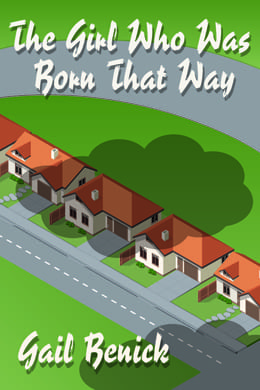

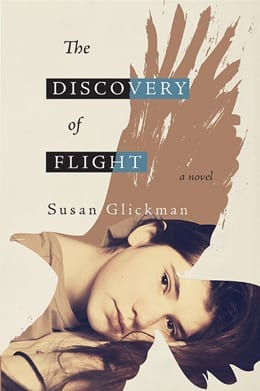
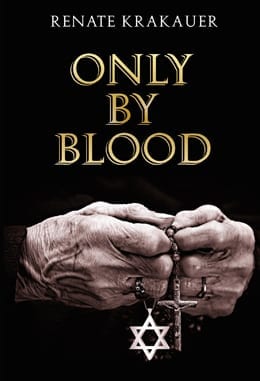
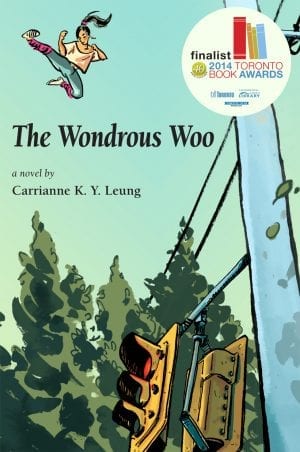

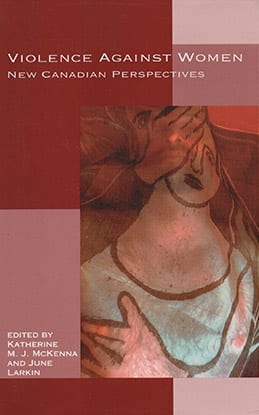
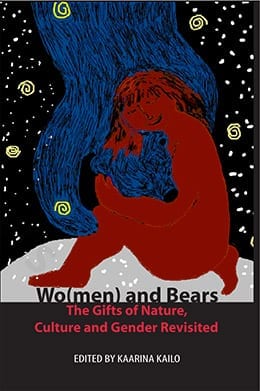
InannaWebmaster –
The Girl Who Was Born That Way by Gail Benick
reviewed by Carol Lipszyc
Canadian Woman Studies / les cahiers de la femme 31.1,2 (Fall/Winter 2016)
At the heart of Gail Benick’s The Girl Who was Born that Way is a double ring of four sisters. On the outer rim move the eldest two, Hetty and Tilya, child survivors of the Lodz Ghetto eager to reinvent themselves in their adopted country; in the inner circle, we greet the younger American-born sisters, the novella’s narrator, Linda Sue, and her older sibling, Terry Sue, who was born with Turner’s Syndrome. I looked forward to the spirited letters Terry Sue writes at the end of each chapter, letters which lend an epistolary mode to the novella. In spite of her genetic mutation and the physical and mental afflictions she suffers (she becomes anorexic and is hospitalized) Terry Sue’s voice remains inquisitive, youthful, and loving.
In turn, Linda is protective and considerate of her sister, at one point buying foam rubber to make falsies for Terry Sue, who does not develop normally. Highly attuned, Linda decodes her child and adolescent world, making sense of her family and of a broken past that imposes without warning like a sinister wind funneling its way into the home. Often that wind is chased away by her father’s sense of adventure and her older sisters’ desire to regain normalcy, to keep their Jewish identity under the radar, and to integrate with dignity into St. Louis society circa the 1950s-60s. Danger lurks, though, real or otherwise. Linda Sue has internalized some of her mother’s palpable fear. At one point, Linda Sue watches an antique fan turning overhead and conjures up decapitation, imagining her mother’s suicide should such a catastrophe befall her. Of course, her family did survive a cataclysm before she was born. In a segment that reminded me of Anne Frank’s rules for the Annex, Hetty relays to her younger sisters the Berkowitz Guide to Surviving in the Lodz Ghetto. Her memories here, with credit to Benick, are transplanted onto the page authentically, sparely, through the eyes of a child. (How the family survived the liquidation of the Lodz Ghetto and deportation to Auschwitz in the summer of 1944 is not dealt with in the back story.)
Along with the sadness, the “shadow of grief” her mother conveys, the narrative moves at a buoyant pace as navigated by Linda Sue, highlighted by flashes of family outings, pubescent dances with boys, and by her interaction with colourful neighbourhood characters whose voices add texture to the novella and perspective to Linda Sue’s world view. All this before the novella takes its tragic turn in the untimely death of Terry Sue. At the end of the novella, it is Tilya, renamed Toni, who writes a dissertation in honor of her sister’s misunderstood disease and death. In this instance, unlike so many of Linda Sue’s questions left unanswered in the novella, Toni’s inquiry is a gift of scholarship and commemoration, one that is both fruitful and life-affirming.